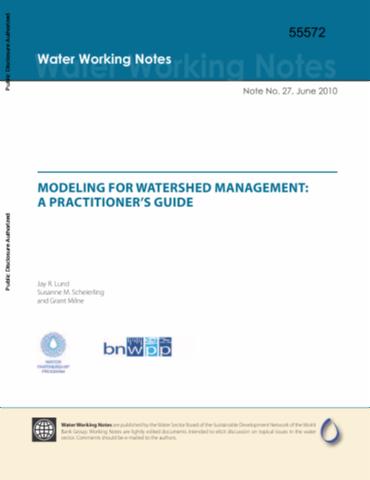Resource information
Watershed management problems are usually quite diverse, and involve a wide range of biological, geological, chemical, and physical processes with complex human, social, and economic contexts. The working note seeks to show that computer modeling allows us to better organize, test, and refine our thinking about watershed management problems and potential solutions. Typically, the flow of water leads modeling to be organized into the following areas: (i) precipitation and climate models; (ii) precipitation-runoff models; (iii) stream and aquifer models; (iv) infrastructure operations models; (v) economic, agronomic, social, environmental demand and performance models; and (vi) decision-making models. Selecting the right model to apply to specific problems requires that several factors be considered along with the objectives for modeling in the context of the field decision problem. Key factors include understandability, development and application time, resources required, transferability and maintenance. Good modeling is common-sense and understanding reduced to calculation for the purposes of gaining insights into a real problem. Modeling should aid discussions, help thinking and provide insights to problems where individuals and interests struggle to understand the problem and struggle to work together to address a problem. To aid model development and the interpretation and communication of modeling and model results and insights, simplicity is a great virtue. While complex problems sometimes require complex models, shedding of unneeded complexity is important. Local and in-house expertise is preferred when developing and applying watershed models because of better familiarity with the problems assessed. Model integration is a growing trend but requires as much expertise and resources as development of any single model component.


